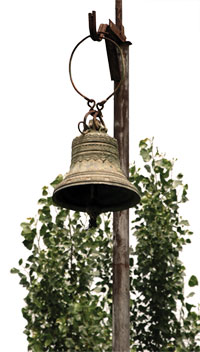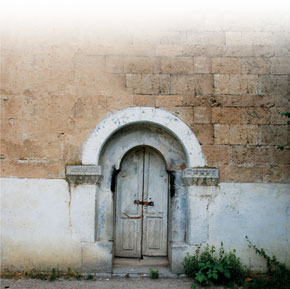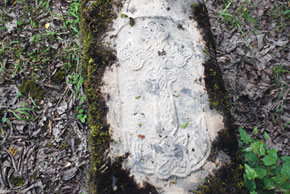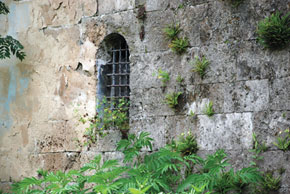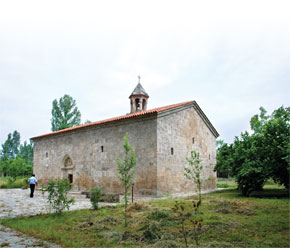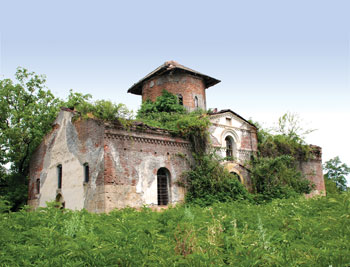 Pages 62-65
Pages 62-65by Fiona Maclachlan
With regret we turned down the offer of chay, a regret which is with me still. We had simply run out of that precious commodity – time. The peace, love and warm sincerity which emanated from our host lingers on in my memories.
Azerbaijan’s Nij village is located in what was once known as Caucasian Albania and this region was Christian for hundreds of years before the arrival of Islam. The land was occupied by Albanian people, tall and fair. Over many years the Arabic
And so, in the village of Nij, we have a population of people who are direct descendents of the ancient Caucasian Albanians, and they are known as the Udi people. Amazingly, they still have their own Udi language (using 49 characters), and indeed they retain their own ancient form of Christianity.
After the arrival of Islam, Eastern Orthodox Christianity survived only in pockets where it had once been prevalent. The religion spread into Russia and had hundreds of years of varying support and dominance from the state. In Nij, interference from Russia was less until the time of the Soviet Empire, when Azerbaijan fell under Soviet rule, which generally discouraged all religious activity. The churches of Nij fell into disrepair.
Since the end of Soviet rule, the Russian people in Russia (and indeed the people of other former Soviet states) have been embracing Christianity with passion, rebuilding churches and cathedrals which had been destroyed or neglected. The Udi people of Nij want to do the same, but the process is taking a little longer. Poverty together perhaps with fear of being aligned with neighbouring Christian Armenia, at odds with Azerbaijan over the Nagornah Karabagh issue, has meant that recovery is slow.
But the slow recovery is just in the buildings and in the literature. The Udi people of Nij , in their hearts and in their blood, are still Udi, and still Christian. They speak Udi as their first language, with Azerbaij ani and Russian as second languages. They had been praying in their own homes. The fi rst support came from Norway, a friend to Azerbaijan perhaps partly stemming from a belief of common ancestry and shared historical trade routes.
The first church was restored (2003 - 2006). But some Nij people were still maybe nervous about being aligned with neighbouring Armenia. Some left Nij (there are smaller Udi populations in Georgia and in Russia as a result). This was a worrying time for the Udi people.
Gradually the Udi people of Nij began to feel more comfortable in N. as suspicion towards them fell away. Today the Azerbaijani people are proud to have the Christian Udis amongst them, and support is now coming from the Azerbaijani government and money is being made available from Azerbaijan’s oil revenues. Udi bibles are being sourced, and a minister is on his way; he is currently undergoing traning.
Nij is a large spread out village in the Qabala Region of Azerbaijan, but it is tucked a little way off the main tourist route from Baku to Sheki. For this reason it is bypassed by most travellers. You have to make an effort to go there. I have passed the ‘road end’ frequently.
With help from the excellent staff at the Qabala Hotel,I was introduced to some Udi people in Nij who in turn introduced me to the gentleman looking after the churches. His name is Rafiq and he will happily show you around. Just take a translator if you don’t speak Udi or Azerbaijani or Russian.
One church, Chotari, is restored (2006) and functioning with services every Sunday (12 – 2pm) attracting maybe a hundred worshippers. There is no singing as part of the service, but in the past there was, and perhaps there will be again in the future. It has a meeting room.
One church, Goyin, is to be turned into a museum, perhaps in 2010...
One church is derelict.
I highly recommend a visit to the village of Nij for anyone interested in Christianity and its history. Words alone cannot do justice to the feelings you get when you visit these churches, to meet the charming and welcoming Udi people, to see and wonder about the many links with other more ancient religions.
Enter through the low doorways; bow your head as you go, showing respect to God. Find out about the baptism rituals. Hear about sacrificial practices. Visit the cemeteries and witness the wonderful engravings on the tomb stones. One of my own favourites has to be the ‘Celtic’ knot work design.
I hope these photographs whet your appetite for a trip to Nij I wish I could’ve stayed longer.
